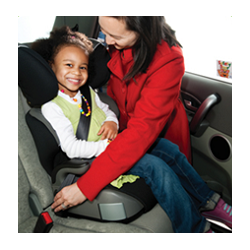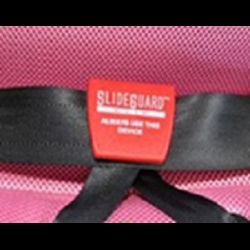Booster seats are held in place by the child’s own body and the vehicle's lap-sash seat belt. A child can be injured in a crash if the seat belt is not properly adjusted.
Tips when choosing and using a booster seat
Never use a lap-only seat belt with a booster seat, only a lap-sash seat belt. If there is no choice but to use a lap-only seat belt, you must also use a child safety harness.
Check that the sash of the seat belt crosses your child's shoulder and does not touch their neck. The sash guide on the booster seat can be adjusted to prevent this. If your seat has a top tether strap make sure you use it.
Choose a booster seat with an expandable headrest. You can adjust the height of the booster seat as your child grows.
Choose a booster seat with an anti-submarining feature. This holds the lap part of the seat belt down low on a child's hips, to stop them from sliding under the seat belt in a crash.
Integrated booster seats
Children aged 4 years or older can use integrated booster seats when travelling in Victoria.
Integrated booster seats have already been built into the seat of the car and can be adjusted so that an adult or a child aged 4 years or older can travel in the seat.
Booster cushions
The use of booster cushions is not recommended.
Booster cushions are seats which do not have a seat back. They provide no protection to a child in a side-on crash.

